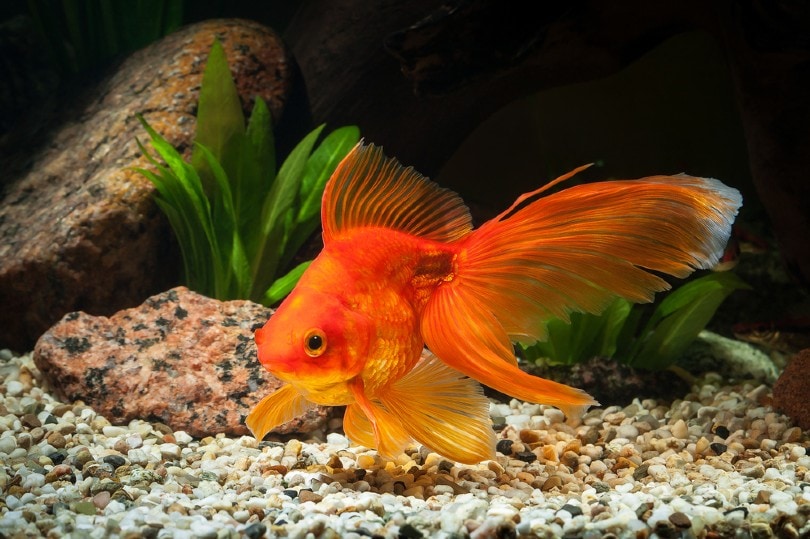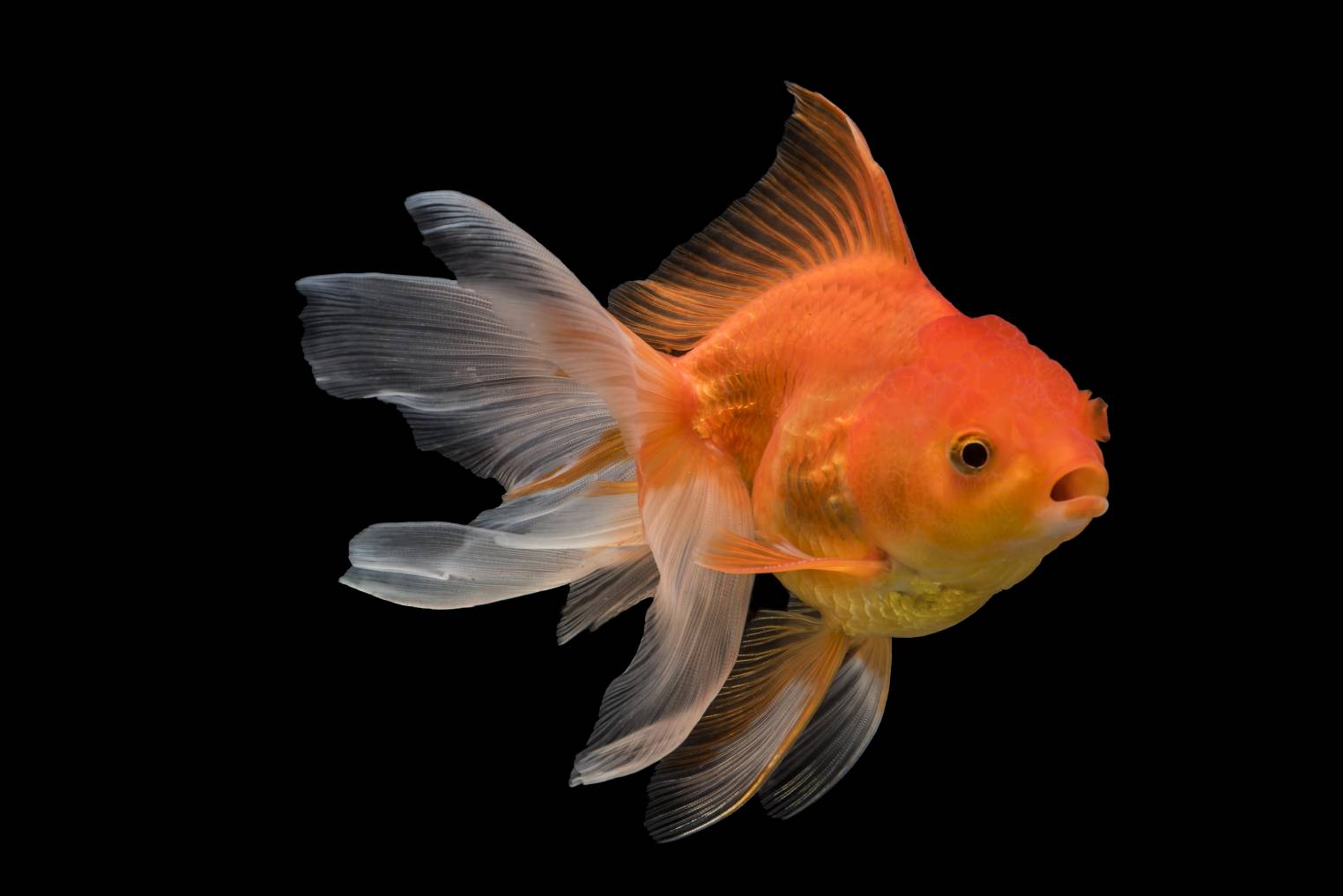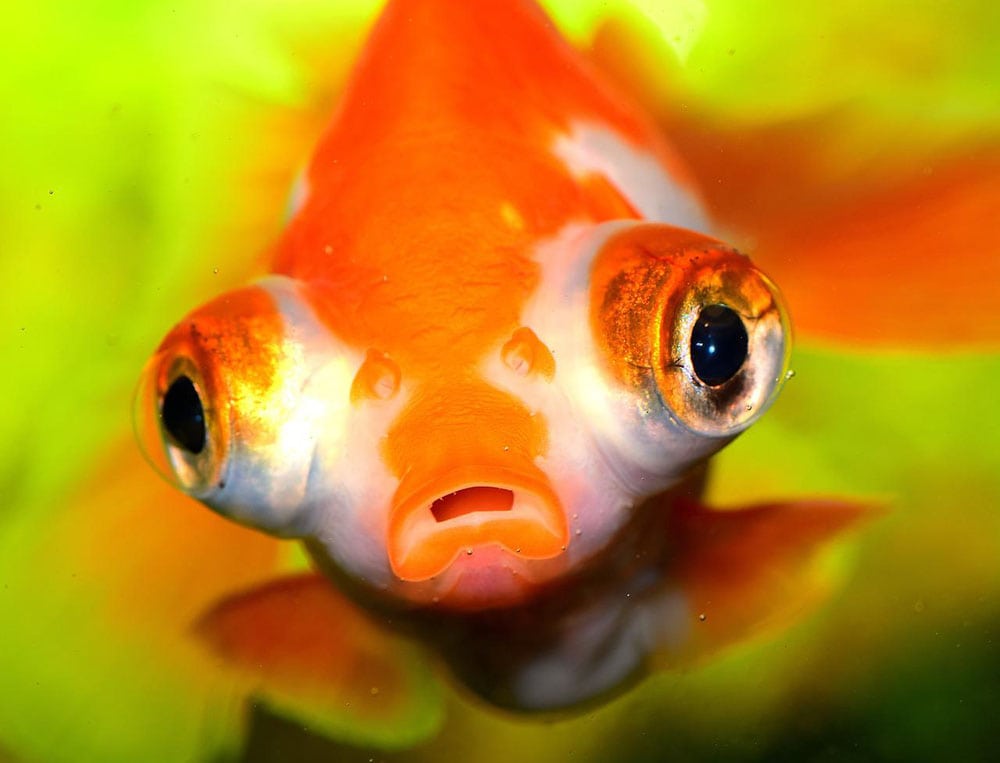It’s becoming increasingly well-established that goldfish are far more intelligent than we’ve been giving them credit for. These social fish have shown an ability to recognize patterns and faces, keep track of time, and even be trained to perform tricks.
Obviously, these abilities show intelligence and a level of visual acuity you may not have attributed to goldfish previously. But can they see color or recognize the difference between shades of colors? The shocking answer is that they have better color receptors than humans! If you want to incorporate colorful training tools into your goldfish’s world, keep reading for more interesting information.

Can Goldfish See in Color?
Not only can goldfish see in color, but they have more color receptors in their eyes than humans do. Humans have three color receptors, allowing us to see red, green, and blue, as well as combinations of the three.
On the other hand, goldfish have four color receptors in their eyes. They are able to see red, green, and blue, just like humans, but they also have ultraviolet receptors in their eyes. Having these color receptors, or “cones”, in the eyes isn’t enough to guarantee color vision. Behavioral testing must back up the ability to differentiate between colors, but goldfish and a variety of other fish have shown this ability as well.

What Kind of Things Do Ultraviolet Cones Allow to Be Seen?
There are things on the ultraviolet light spectrum that we are not capable of seeing. For example, sunlight produces ultraviolet light. We can see the brightness of sunlight, but we cannot see the ultraviolet light spectrum that comes with it. Goldfish can see things on this ultraviolet light spectrum thanks to their fourth set of color receptors.
Being able to see things on the ultraviolet spectrum might help goldfish keep track of time, hunt and find food, and stay safe from predators and dangerous situations.
If you're new to the world of goldfish keeping or are experienced but love to learn more, we highly recommend you check out the best-selling book, The Truth About Goldfish, on Amazon.
From diagnosing illnesses and providing correct treatments to proper nutrition, tank maintenance and water quality advice, this book will help you to ensure your goldfish are happy and to be the best goldfish keeper you can be.
Can Goldfish See in the Dark?
Although they can see more color than humans, goldfish are not able to see in the dark. It’s unclear how their visual acuity is in low-light situations and how it compares to that of humans, but goldfish are not able to see in full darkness.
Goldfish do sleep at night, so you’re unlikely to notice much activity in your tank after dark. If you drop food into the tank after lights out, your goldfish may come to life and begin eating the food. They can find food in the dark via their excellent sense of smell, not through visual means. Many goldfish will be less active in the dark, though, making nighttime a good time to offer food to nocturnal fish in the tank and slower animals that may get food stolen by goldfish.
- See Also: Goldfish Turning Red? Here’s What To Do!


Conclusion
Goldfish do have color vision, and they contain a fourth color receptor in the eyes that humans don’t have. It’s unclear how good their color acuity is, but behavioral studies have indicated that goldfish can easily differentiate between different colors.
Color can be a great addition to your goldfish’s training regimen. Goldfish can learn to associate specific colors with rewards and food, making it easier to train them to perform specific tasks. Try incorporating color training into your goldfish’s training and see what fun results you can achieve!
Featured Image Credit: JuanCarlosPalauDiaz, Pixabay










